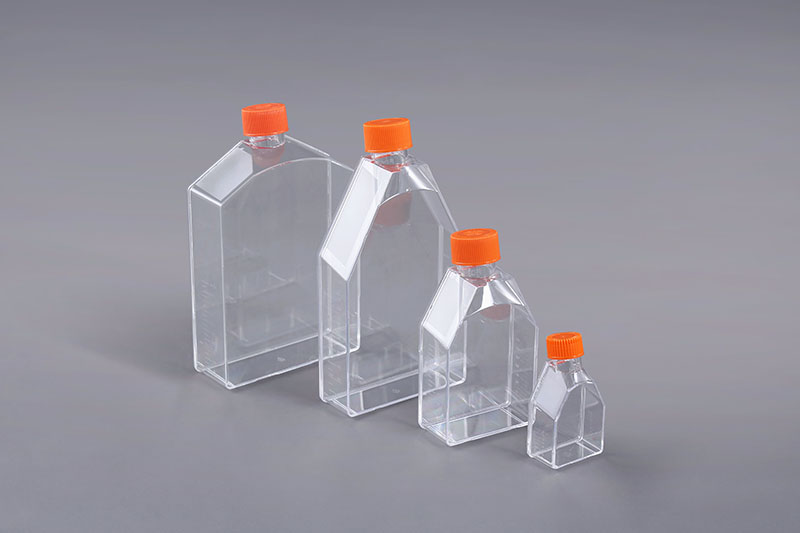The cell culture flask is a consumable suitable for medium-scale cell tissue culture in the laboratory. The quality of the consumable is related to the process of the experiment and is crucial to the growth and reproduction of the cells. The following factors should be considered when choosing this consumable:
1. Width and shape of the bottleneck: When culturing cells, it involves pipetting and harvesting cells. The design of the wide bottleneck allows the spatula or pipette to enter the bottle more conveniently and facilitates the operation. There is also the use of various enzymes to decompose the cells and then harvest the cells. The curved neck design does not leave a dead corner, which is convenient for the export of the culture medium.
2. Sterilization assurance level: cell growth has strict requirements on the environment, so cell culture flasks must reach a certain level of sterility so as not to affect cell growth. Generally, SAL10-6 is required in the industry, and the non-sterilization rate does not exceed 100%. One in 10,000.
3. Airflow under the culture bottle: Cell culture needs to be stable and stable. There are usually ventilating spokes at the bottom of the bottle to ensure air circulation and maintain temperature balance.
4. Durable design: This mainly refers to the processing materials and wall thickness of the bottle. Good materials and wall thickness can provide better mechanical resistance.
5. Demonstration TC treatment: This consumable is mainly used for the cultivation of adherent cells, and has high requirements on the surface adsorption performance. Generally, it will undergo special demonstrative modification treatment to ensure that the cells can be well attached to the surface of the bottle.
The above are the five factors that need to be considered when choosing a cell culture flask. High-quality consumables are the prerequisite for a successful experiment. When choosing consumables, you should not only consider the price, but also pay attention to the quality of the product.
The FAI climbed 5.9 percent year-on-year in the first 11 months of 2018, quickening from the 5.7-percent growth in Jan-Oct, the National Bureau of Statistics (NBS) said Friday in an online statement.
The key indicator of investment, dubbed a major growth driver, hit the bottom in August and has since started to rebound steadily.
In the face of emerging economic challenges home and abroad, China has stepped up efforts to stabilize investment, in particular rolling out measures to motivate private investors and channel funds into infrastructure.
Friday's data showed private investment, accounting for more than 60 percent of the total FAI, expanded by a brisk 8.7 percent.
NBS spokesperson Mao Shengyong said funds into weak economic links registered rapid increases as investment in environmental protection and agriculture jumped 42 percent and 12.5 percent respectively, much faster than the average.
In breakdown, investment in high-tech and equipment manufacturing remained vigorous with 16.1-percent and 11.6-percent increases respectively in the first 11 months. Infrastructure investment gained 3.7 percent, staying flat. Investment in property development rose 9.7 percent, also unchanged.
 English
English



















































